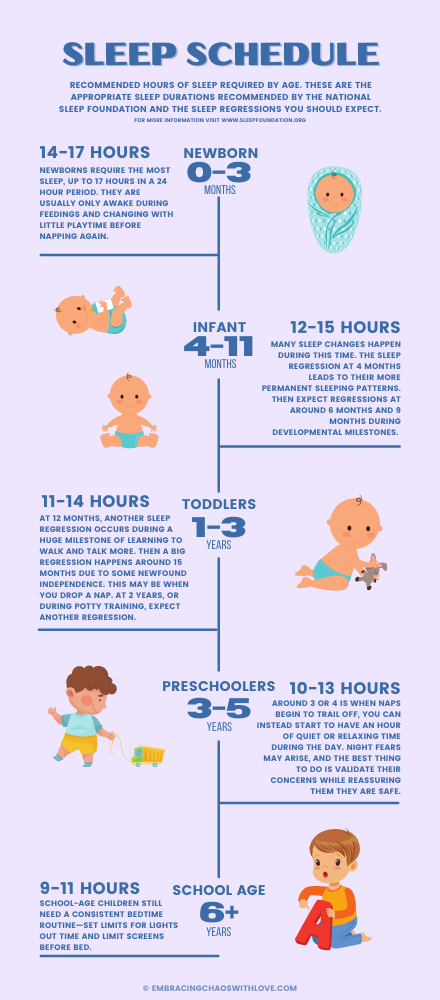You’re a parent with a toddler and you think it’s time to transition your child from two naps to one. But how do you know when the time is right? This post will determine how and when to transition your child to one nap.
Check out the following signs that it might be time for your child to transition from 2 naps per day to 1 nap per day. If any of these apply, then keep reading for how to transition.
We’ve also got some tips on making this transition easier for everyone involved—advice on what you should do when your toddler resists giving up that second nap.
When do babies transition to one nap?
Babies tend to transition to one nap around age 1 1/2. Some babies can transition as early as 12 months old. The most common time to transition to one nap is around 15 months. At this age, they are very flexible regarding when they take a nap. As long as the naptime is consistent, they can typically go down for rest anywhere between 9 AM and 3 PM.

If your baby is still taking two naps per day after the age of 2, then you might need to re-evaluate their naptime schedule. You may be allowing them to take two naps per day instead of encouraging them to transition to one nap.
It is ok for your baby to continue taking two naps until age three if they need extra sleep. If this is the case, then give your baby plenty of time to sleep for their first nap during the day. If you are concerned about them sleeping too much during this time, consider moving their naptime later to make up for this longer nap.
Many toddlers will also go through a sleep regression or a nap strike during this age time before fully transitioning to one nap. A regression period lasts 2-4 months and can often disrupt transitioning to one nap.
Transition to One Nap Signs
Here are some signs that might indicate it’s time for your toddler to transition from two naps per day to one nap:
1. Your Toddler is Not Sleeping Well
If your child is not sleeping as well as they usually do and are not experiencing sleep regression, their nap schedule may need to be adjusted.
2. Child has trouble falling asleep at one of their naptimes.
If your child has trouble falling asleep for their naps at regular times, they may need a more extended rest instead of two short ones. For example, they may fall asleep fine for their morning nap but not their midday nap.
3. They start to protest or refuse second nap consistently for two weeks.
If your child always protests or refuses their second nap, they probably no longer need it. If you allow them to take two naps daily, they are probably taking the second nap out of habit instead of because their body needs it.

4. They struggle with short naps during the day
If your child is taking short naps during their naptimes and still seem tired, then they probably need more time for one of their naps. In this case, extending the amount of time they sleep during one nap may be a good idea. For example, if your child usually takes (2) 1/2 hr -1 hour naps, then consider making it just one 2 hour – 2-1/2 hour nap.
5. They require a late bedtime to fit both naps in
If your child needs to take their second nap very late in the day (after 3 PM) to get adequate sleep, then they probably would be better off if you just moved that nap earlier. For example, if they need their morning nap between 8 AM and 10 AM but their afternoon nap is after 3 PM, they may need to adjust their morning nap time to later.
6. Experience early morning wakings after a two nap day
If your child takes two naps daily, they will often experience early morning or increased night wakings after taking two naps. If this occurs, consider moving their rest later and making it only one so that it is more aligned with their natural sleep rhythm.
7. Naps are starting to vary in length.
If your child is always taking the same length of naps but suddenly starts to take shorter or longer naps each day, they may need more time for one rest. Disruption means you should consider extending their sleep for one nap, not too long or too short. For example, if your child usually takes (2) 45 min – 1-hour naps, then you may try making one of them (2) 1-1/2 hr – 2-hour naps.
If your child is experiencing any of these signs, you need to consider adjusting their schedule to take just one nap per day. If your child is not showing any of these signs yet, but you still think it is time for them to transition, then you can follow the tips below to help your child adjust.
Tips for Transitioning
Here are some tips that you can use when transitioning your toddler from two naps to one nap:
-
Keep changes gradual– when adjusting naps and bedtimes, do it gradually over time. It takes patience, but your child will transition much smoother if you do it gradually.
-
Keep the 2nd nap as a quiet time– you can keep letting your child take a second nap, but move it to be more of a quiet time instead of sleep; then, they may not protest as much when they no longer get to take that nap altogether.
-
Keep your child active until nap time- toddlers are very busy and will benefit from staying active until nap time. If they get to take a second nap, then keep them engaged for at least an hour before putting them down to sleep in their crib.
-
Realize there may be the occasional two nap days– if your child has a hectic day and needs more sleep than usual, then it may be acceptable to let them take two naps. Just realize that this will not happen often and should only occur on rare occasions.
Steps on How to Transition from 2 Naps to 1
Step 1: Recognize Signs Your Child is Ready
Before transitioning your child from two naps to one, you must first recognize when your child no longer requires a second nap. If your child shows any signs listed above, they may be ready to transition to one nap.
It is an excellent time to start the transition if they are around 15 months and have already had sleep regression around 15 months.
Step 2: Shift Nap Time
If you notice your child is no longer showing signs of needing two naps, start shifting their nap times. Move their morning nap later each day until it is around midday.
Continue to offer them a second nap when necessary, but move it earlier in the day to be only about an hour long. If they do not take a second nap after two days, stop offering it.
Step 3: Have a Short Wind-Down Routine
Start a short wind-down routine to help them transition from being awake to going down for their nap. The routine could include taking a bath, reading a book, etc. Please keep it simple. Put on a noise machine and close the curtains. Have a small routine that signals it is time for a nap.
Step 4: Adjust Bedtime
After the second nap, make their bedtime earlier by 30 minutes or less each day until it reaches its desired time. It is common for toddlers to get up earlier once their second nap is gone because they may get too much sleep during the day. Early waking should only last a short time, however.
Step 5: Stay Consistent
Stay consistent with the changes you are making. If your child gets two naps most days but not all, this won’t be very clear for them. Sticking to a schedule is very important for toddlers.
To Transition or Not To Transition?
Even though it is normal for toddlers to transition from two naps to one nap around 15 months, the times can vary greatly depending on your child’s body clock, sleep needs, and schedule. It would help if you considered all of these things before deciding whether or not it is time for your toddler to transition.
If your child is very young (under 12 months), then you should address this in the form of regression. If they are older, they probably need to transition to one nap.
Signs they are not ready for only one nap:
-
Cranky after missing a nap– if your child is cranky after a missed rest, they are not ready. If they are just as happy as usual, it’s safe to say that transitioning to one nap would benefit them.
-
Your toddler gets less than 11 hours of sleep– if your child is getting at least 11 hours of sleep at night and still needs two naps, then it may be time to transition to one nap. If they are not getting 11 hours during the night and their naps are shorter than a few hours each, it might be a sign that you should put them down for an earlier bedtime.
-
Fusses during naptime but then takes a long nap– if your child wakes up and starts fussing, it may be a sign that they are ready for one nap. However, if they fuss and fight sleep during their first nap and eventually take a very long afternoon nap (over 2 hours), you should keep them on two naps until they transition naturally.
-
All sleep is fussy– if all your child’s rest is selective and different, then they may be going through a sleep regression. Regressions can last multiple weeks or months, depending on the type of sleep disruption happening to your child. During a regression would not be a good time to transition them from two naps to one nap because their body clock will still be trying to adjust to the new sleep schedule.
-
Started a developmental milestone– some signs of readiness can be confused with a developmental leap. If your child has begun walking or is about to start crawling, they may be going through a developmental leap and are not genuinely ready for only one nap. They may also show signs of fussiness during feeding time during a milestone.
Sample One Nap Schedule
Here is a sample schedule for a baby on a one-nap schedule:
- 7:30am- Wake up
- 8:00am- Eat Breakfast
- 9:00am- Get Dressed
- 10:00am- Snack
- 10:30am- Outside/Playtime
- 12:00pm- Lunch
- 1:00pm- Nap (2-3 hours)
- 3-4:00pm- Snack upon waking
- 4:30pm- Outside/Playtime
- 5:30pm- Quiet time until dinner
- 6:00pm- Dinner
- 7:30pm- Bedtime Routine
- 8:00pm- Asleep

FAQs of Dropping from 2 naps to 1
1. Is 12 months too early for one nap?
It is not uncommon for a child to transition from two naps to one nap between 12-18 months. The age can vary greatly depending on your child’s sleep needs and schedule. If your toddler is younger than 12 months, you should first address this as regression instead and observe the signs.
2. At what age does a baby drop to one nap?
It is not uncommon for babies to transition from two naps to one nap between 9-18 months as early as twelve months. The age can vary greatly depending on your child’s sleep needs and schedule.
3. How do you get a baby off two naps?
If your child is younger than 12 months, this is regression and should be addressed. If your toddler is older, it’s safe to say that dropping from two naps to one nap could benefit them, and their nap could be longer and more restorative. You can make this transition as smooth as possible by following a schedule.
4. Is ten months too early for one nap?
No, ten months is not too early for one nap. If your child has been sleeping well and consistently at night and during naps, it would be safe to transition them to one nap.
5. Is 19 months old too old for two naps?
If your child has been sleeping well and consistently at night and during their naps, they may not be ready to drop to one nap. If your child is not getting the right amount of sleep at night or during naps, then it might be time for them to transition to one nap instead.
6. Is your child ready?
If your child wakes up and immediately fusses or fights sleep during their first nap and eventually takes a very long second nap, then they may not be ready for one rest. However, if all of their naps are fussy and off, sometimes it might be hard to distinguish whether the fault is with the naptimes themselves or whether they’re going through a sleep regression. If your child is between 12-18 months, it is safe to say that you could transition them from two naps to one nap.
Conclusion
Toddlers are constantly changing and growing, so it’s vital to assess your child’s sleep often so you can make the necessary adjustments as they grow older. If some of their naps seem off at times, there may be a regression or developmental leap happening that causes them not to need as much sleep now as before.
However, if every nap they take is fussy and off, they’re probably ready for one rest instead of two. Just remember that transitioning from two naps to one isn’t always easy on either parent or toddler- but it will ultimately help both parties get better quality rest each day!



